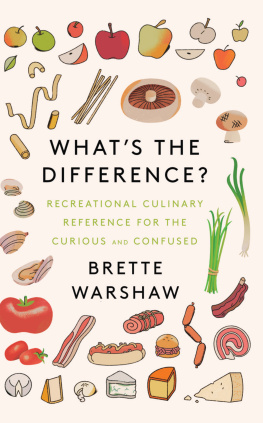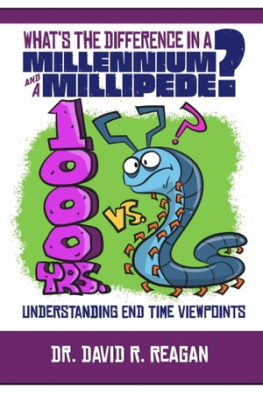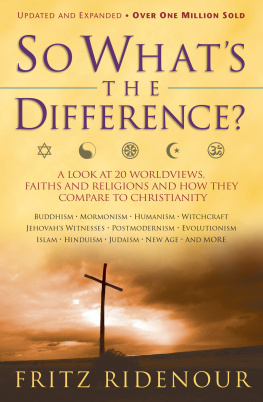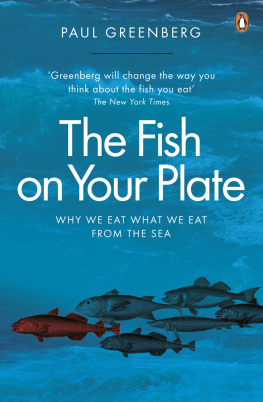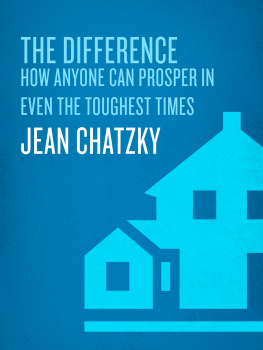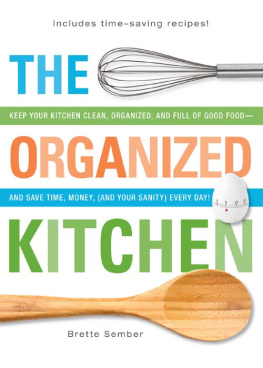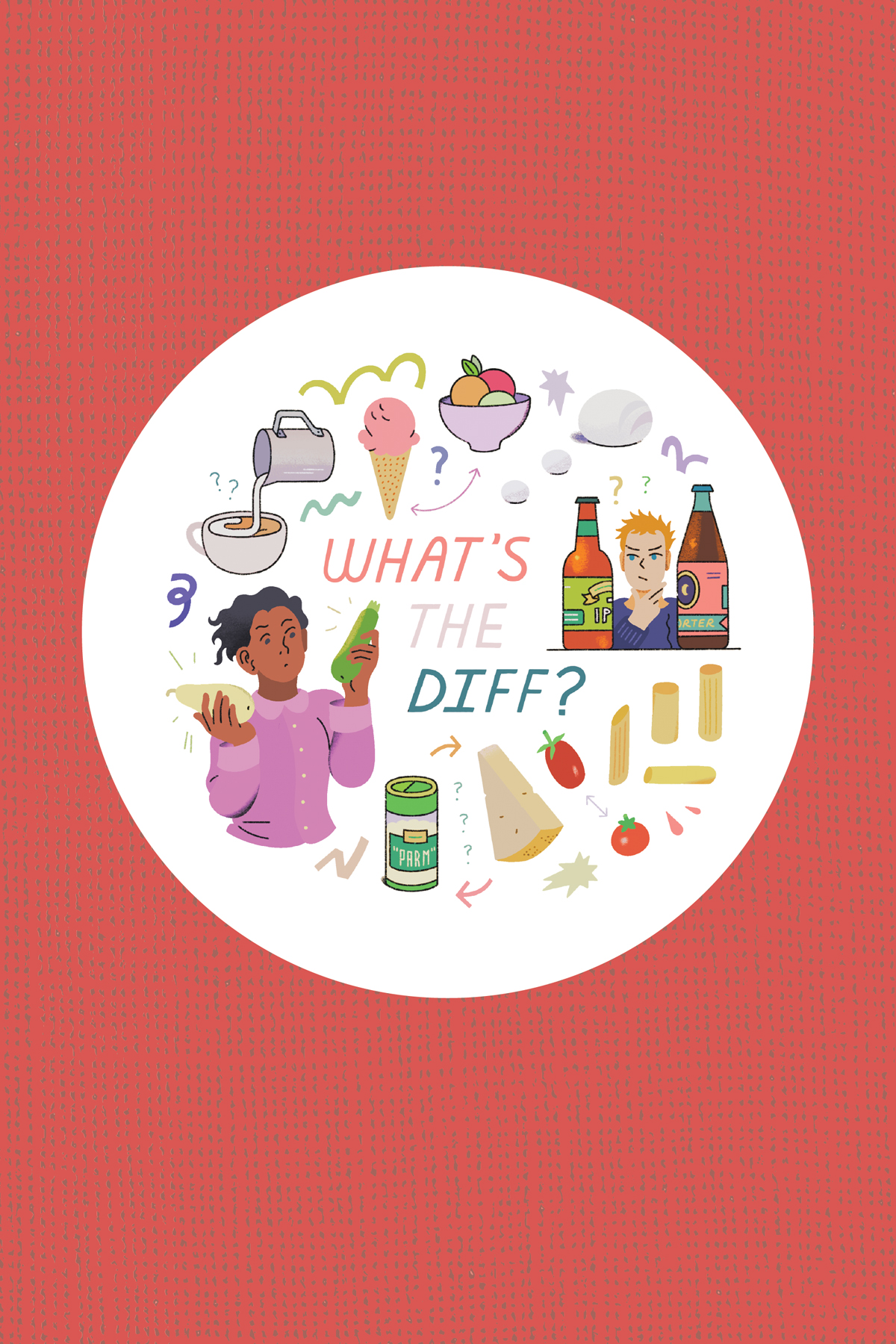Contents
Guide
For J
Contents
We all like to feel smart. Sometimes, that means muscling through On the Origin of Species or Platos Republic. Other times, that means reading a few hundred words about the slight differences between quotidian thingslike seltzer and club soda, or jam and jelly, or sweet potatoes and yamsand becoming incrementally more knowledgeable, arming yourself with the kind of information that makes the world a little more interesting.
I launched the Whats the Difference? newsletter in February 2018 to fill that need. The premise was simple: once a week, I would write about the difference between things that were confused for one another. I polled a few friends, started a spreadsheet with future topics, and got to work. Week after week, the audience grew, and so did that spreadsheet; people wrote in with their own ideas, and the newsletter became something we all built together.
What you have in your hands now is the very best of the food-and-drink category: the product of years of research, interviews, and, well, eating. Whether youre a chef, a passionate home cook, or someone who would drink Soylent for every meal and be absolutely thrilled about it, I bet youll learn something new. I know I did while writing it.
When we bake breador croissants, or cinnamon rolls, or pizza, or pretzelswe are at the mercy of a puny, ancient, single-celled organism: Saccharomyces cerevisiae, also known as yeast. Its a humbling experience, really: if youve ever had to try to convince yourself that the leaden, insulator-foam-textured focaccia you just made isnt really that bad while staring at the fluffy, ethereal versions on the internet, youve gotten a sense of how much work that tiny creature can do.
The first step to getting yeast to work for you is to use the right type. The three options: fresh, active dry, and instant. Fresh yeast is light, soft, and extremely perishable; it needs to be kept in the fridge and only lasts a few weeks. Its 70 percent water by weight, and 100 percent of the yeast cells are living and active. That means that it needs no proofingyou can crumble it right into the recipe. As for the flavor: while all yeast tastes, well, yeasty, fresh yeast is decidedly more so. Its a little more floral, a little more noticeable, says baking expert and cookbook author Erin McDowell. If you gave me three things made with the three kinds of yeast, Id be able to pick out the one thats fresh.
Active dry yeast is granulated and sold in glass jars or individual quarter-ounce packets. To make the productwhich is 95 percent dry matterthe yeast gets exposed to such high temperatures that many of the cells are destroyed. That means that it needs to be proofed (dissolved in a warm liquid, ideally between 105 and 115F) before getting used in a recipe. The liquid sloughs off the dead cells and exposes the active, living ones, which start happily making bubbles when theyre ready to go.
Instant yeast, like active dry yeast, is granulated and made of 95 percent dry matterbut the drying process is gentler, which means all of those dried particles are active. It therefore doesnt need to be proofed and can be added straight into a recipe. Instant yeast also works quicker than active dry yeast, with a rise time thats approximately 50 percent speedier. That, plus eliminating the minutes spent staring at your proofing liquid trying to decide if there are actually bubbles or not, can save you some time in the kitchen.
Now, for the big question: Can you substitute one type of yeast for the other? Kind of. McDowell recommends keeping fresh yeast in its own category, and only swapping it in for the granulated stuff if you really know what youre doing. But if you have instant yeast and need active dry, according to Modernist Bread author Nathan Myhrvold, you can multiply the amount by 1.33; if you have active dry yeast but need instant yeast, multiply it by 0.75.
At some point in the American collective conscience, mayonnaise got pushed aside for aioli: its sexy, foreign counterpart that made every sandwich sound instantly more gourmet. People started going around saying, I dont like mayo, but I love aioli. Whats the deal? Are they actually that different?
Both mayonnaise and aioli are emulsions: a mixture of two or more liquids that really dont like each other. Think oil and water, or oil and any water-based substance. In order for the two things to emulsify, the oil needs to be broken down into teeny-tiny droplets, which then get suspended in the mixture. The result: a thick concoction with a texture altogether different from the two liquids on their own.
In the case of mayonnaise, oil is mixed with egg yolk, salt, and an acid like lemon juice or vinegar. Sometimes theres mustard in there too, to help things along. The result: a thick, velvety, pleasantly bland condiment.
Classic aioli, which can be found in Spain and other Mediterranean cuisines, is just a mixture of oil, garlic, and salt, whipped into a creamy, potent spread. No egg yolk, no mustard. But these days, aioli is used to describe any kind of flavored mayowhether its spiked with garlic, chipotle, pesto, paprika... you name it. Its just mayo with stuff in it.
So to all the folks out there who lather up their sandwiches with truffle aioli... sorry babe, youre just eating mayo.
Remember in the beginning of the coronavirus pandemic, when you couldnt find a bag of all-purpose flour at even the most random of grocery stores? I bet you were wondering if that old bag of cake flour in the back of your pantry could feed your sourdough hobby, or if you could use bread flour to try your hand at homemade pasta. Thats the problem with flours being labeled by their specific use: its great if youre baking bread or cake or pastry, but not if youre attempting any off-the-cuff decisions.
All-purpose, bread, pastry, and cake flours are all white flours, which means the wheat grains (also known as wheatberries) have been stripped of their bran and germ, leaving just the starchy endosperm. What makes them different from one anotherand particularly good for their label-sanctioned usesis their protein content. Flour contains two types of protein: glutenin, which makes the dough elastic, and gliadin, which gives the dough the ability to stretch to get a higher rise. The more protein, the chewier and firmer your final product will be; with less protein, youll get a delicate, finer crumb.
Here are the most common types of flour and what each of them is good for.
All-Purpose Flour
All-purpose flour is true to its name: its strong enough for breads and light enough for baked goods, making it the ultimate pantry workhorse. Look for an unbleached variety, which means that it hasnt been chemically treated to whiten it. (When flour is first milled, it has a yellowish color, which fades to white as it ages.) The protein content of all-purpose flour actually varies across the country: U.S. national brands have 1112 percent, while regional brands in the South and Pacific Northwest have 7.59.5 percent. If youre looking for a consistent final product, its best to stick to the national brandsthats what most recipes are written for. (Unless youre making biscuits, in which case youd want to track down White Lily.)
Bread Flour
Bread flour has a protein content of 1213 percent, making it great for things like bagels, country loaves, and certain types of pizza. (And yes, you can use it for your sourdough.) For softer breads like white bread or challah or dinner rolls, youll probably want to stick with AP.

